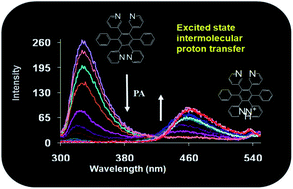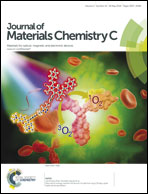Fluorescent aggregates of hetero-oligophenylene derivative as “no quenching” probe for detection of picric acid at femtogram level†
Abstract
Fluorescent aggregates of hetero-oligophenylene derivative 3 serve as a “no quenching” probe for the detection of picric acid (PA) in aqueous media. Photo-induced intermolecular excited-state proton transfer from PA to pyridyl nitrogen results in the formation of protonated species, which exhibit emission at a different wavelength; hence, there is “no quenching” detection of PA in aqueous media.


 Please wait while we load your content...
Please wait while we load your content...